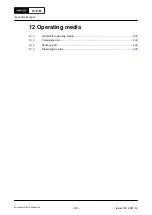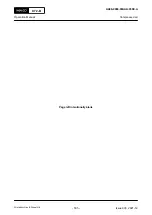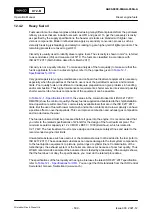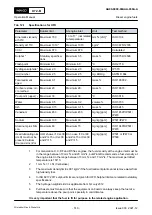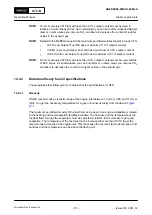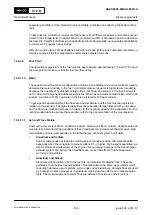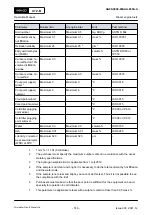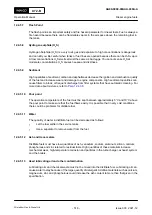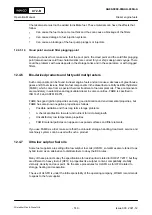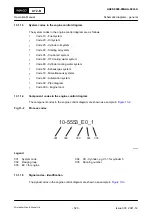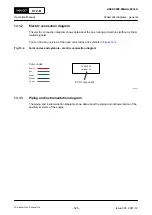
separators and filters. If the blended fuel is not stable, particles can collect on the bottom of the
tank.
To keep risks to a minimum, make sure that bunkers from different suppliers and sources are not
mixed in the storage tanks on board. Also be careful when HFO is blended on board to decrease
the viscosity. Paraffinic distillate, when added to an HFO of low stability, can cause the asphaltenes
to collect, which causes heavy sludge.
HFO can contain up to 14% asphaltenes and will not cause ignition and combustion problems in
2-stroke engines if the fuel preparation equipment is adjusted correctly.
12.4.3.9
Pour Point
The operation temperature of the fuel must be kept between approximately 5°C and 10°C above
the pour point to make sure that the fuel can flow easily.
12.4.3.10
Water
The separator and the correct configuration of drains in the settling and service tanks are used to
decrease the water quantity in the fuel. A complete removal of water is highly recommended to
decrease the quantity of hydrophilic catalytic fines (cat fines) and sodium in the fuel. Sodium is
not a natural oil component, but diesel engine fuel often has sea water contamination, which has
sodium. A content of 1.0% sea water in the fuel is related to 100 ppm sodium.
To get a good separation effect, the flow rate and temperature of the fuel must be adjusted in
relation to the viscosity. For high-viscosity fuels the separation temperature must be increased,
and the flow rate must be decreased in relation to the nominal capacity of the separator. For the
recommended data to operate the separator, refer to the documentation of the manufacturer.
12.4.3.11
Ash and Trace Metals
Fuels with a low content of ash, vanadium, sodium, aluminum, silicon, calcium, phosphorous and
zinc are recommended. High quantities of these materials can increase mechanical wear, high-
temperature corrosion and particles in the turbocharger, exhaust system and boilers.
•
Vanadium and Sodium
Sodium compounds decrease the melting point of vanadium oxide and sulphate salts,
especially when the vanadium to sodium ratio is 3:1 or higher. High sodium quantities (as
well as lithium and potassium) at the engine inlet can cause damage to the turbocharger,
exhaust system and boilers. Ash modifiers can correct the effect of high-temperature
corrosion and particles.
•
Aluminum and Silicon
Aluminum (Al) and silicon (Si) in the fuel are an indication of catalytic fines. These are
particles of hard oxides (round particles of material almost the same as porcelain) which
cause high abrasive wear to pistons, piston rings and cylinder liners. Catalytic fines are used
as a catalyst in some processes in petroleum refining and can be found in diesel engine
fuels. The most dangerous catalytic fines are between 10 microns and 20 microns.
X72-B
AA00-0000-00AAA-030A-A
Operation Manual
Diesel engine fuels
Winterthur Gas & Diesel Ltd.
- 514 -
Issue 003 2021-12


